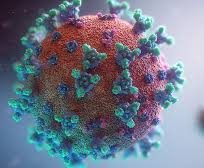Human Metapneumovirus (HMPV)
Human Metapneumovirus (HMPV) has become a cause for concern as cases of COVID-19 and RSV decline.
Understanding HMPV
HMPV, short for Human Metapneumovirus, is a respiratory virus that has gained attention due to its prevalence and impact. In March, 11% of PCR tests and 20% of antigen tests for HMPV in the US yielded positive results. This reflects a significant increase of 36% compared to pre-pandemic levels, indicating its potential as a respiratory threat.
Positivity Rates and Seasonality
According to a report from the Centers for Disease Control and Prevention (CDC), positivity rates for HMPV tend to decrease during warmer months, aligning with the patterns observed with flu and colds. In April 2023, the Antigen detection rate for HMPV was 19.395, whereas the PCR detection rate was 10.368. However, these rates declined significantly by May 20, 2023, with the Antigen detection rate at 0.000 and the PCR detection rate at 2.558.
Symptoms and Severity
HMPV primarily affects the upper respiratory tract, leading to symptoms such as nasal congestion, cough, shortness of breath, and fever. Although HMPV is generally a mild respiratory virus, it can pose a serious risk to vulnerable populations, including older adults, young children, and individuals with weakened immune systems. Severe cases of HMPV can result in bronchitis or pneumonia, necessitating intensive care.
Treatment and Vaccine
Currently, there is no specific vaccine available to prevent HMPV infection. Medical treatment for HMPV remains limited to supportive care, focusing on alleviating symptoms and ensuring proper breathing. Severe cases may require intensive care, but most individuals with HMPV recover on their own, similar to other respiratory infections.
Month: Current Affairs - June, 2023
Category: Science & Technology Current Affairs


